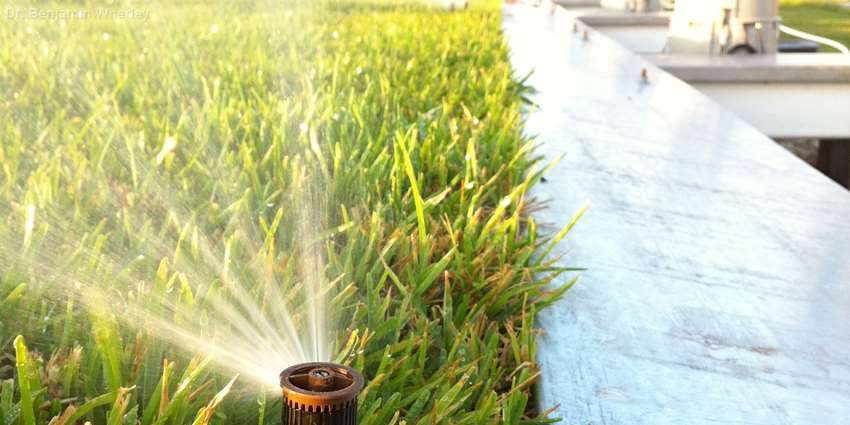Fifteen years ago, Dr. Richard White began to think about the need to consolidate Texas A&M University’s Department of Soil and Crop Sciences turfgrass research in College Station. For years, the professor and his colleagues had conducted field research and analyzed data in two separate locations making their work more difficult and less efficient.
In 2010, Texas A&M AgriLife, the Texas A&M University College of Agriculture and Life Sciences and Scotts Miracle-Gro announced a five-year agreement: the company would pledge support for construction of a new turfgrass education and research facility.
Now, the Scott’s Miracle-Gro Facility for Lawn and Garden Researchis nearing completion. The 12,000-square foot facility, located on F and B Road near Wellborn Road, will support water quality and conservation efforts and turfgrass research, providing space for laboratories, offices and seminars.
“This building will allow us space to better extend our research to students and the public and professionals in the industry,” White said. “In terms of turf research and education, this facility will be probably one of the best, if not the best, in the United States.”
Students and scientists will be able to conduct fieldwork outside and immediately go indoors to analyze their data, he said. The facility’s exterior coordinates with the architecture found on that part of Texas A&M’s campus, and it also has an equipment room, mechanical shop and crop protection chemical storage.
Dr. Benjamin Wherley, associate professor, said the department’s primary research focus is to help clientele better manage turfgrass systems in sustainable ways as well as conserve water and minimize any possible negative impacts on the environment. Clientele include landscapers, golf course superintendents and sports field managers. Projects are funded through agencies and companies such as Scotts Miracle-Gro, United States Golf Association Green Section and the U.S. Department of Agriculture Specialty Crops Research Initiative.
The researchers have tested the effects of shade and salinity on grass growth and explored herbicide management through best management practices or integrated pest management.
Part of the facility is dedicated to understanding and improving irrigation auditing, White said. Students can measure runoff and see the impact of inappropriate irrigation applications.
A groundbreaking landscape irrigation runoff mitigation system being developed by the team has the potential to reduce water runoff from landscapes and save homeowners and professionals significant amounts of water.
“We know it works,” White said, noting the technology reduced water runoff from irrigation by up to 50 percent. “I’m convinced we could reduce that water waste from irrigation due to surface runoff by up to 90 percent.”
Breeding turfgrass varieties also brings about opportunities for water conservation. Developing drought-tolerant grasses and grasses that can tolerate deficit irrigation is a priority, given the recent droughts in California and across the south-central U.S., Wherley said.
Turfgrass has long been perceived as a water-guzzling commodity by some, he said, and drought-ridden states often point out golf courses’ water usage as examples. But research shows turf can be a good thing.
Turfgrass helps capture and filter water, decrease sediment losses to surface water and reduce erosion, which are urban ecosystem services, White said.
“Historically, turf has had the reputation of being, in some respects, nonsustainable, and I think our research efforts are helping to find more sustainable approaches,” he said.
White said he hopes the research at the nearly complete facility will continue to demonstrate turf as a valuable part of water-efficient and sustainable environments.
“We want to view turf more of a resource in itself, as opposed to just a system that’s consuming resources.”

